May 12, 2021
Azure Remote Rendering: test and use cases
Recently, Microsoft has extended its offer Azure Cloud to the delight of HoloLens headset users. Azure Remote Rendering (ARR) was a highly anticipated feature for companies using AR technology.
Our team has tested and carried out its first projects with this new technology!
Below, a video of a project that our team carried out. Thanks to Remote Rendering, we are able to display in the HoloLens a very detailed 3D model of an oil rig. The HoloLens alone would not have had enough power to display this 3D model of more than 10 million polygons.
What is Azure Microsoft Remote Rendering for?
Azure Remote Rendering (ARR) addresses the need to simplify 3D models, a necessary step for viewing 3D models in AR devices, such as HoloLens 2. Indeed, the complexity of 3D models in the industrial sector is so vast that the number of polygons easily exceeds tens of millions, which is beyond the capabilities of the HoloLens headset (display of 200,000 polygons maximum). This technical limit leads to reduce the number of polygons in the model manually or by using tools such as Pixyz and Simplygon. This results in a compromised visual rendering: a loss of details and information, which significantly alters the quality of the 3D model, for the benefit of the fluidity of the application.
Therefore Microsoft has developed a solution which delegates rendering calculations to cloud servers able to process complex 3D models. ARR then sends the result back to the client software as a 3D streamingin real time. We get a fluid display, faithful to the basic 3D model, which adapts to the user’s position. The details and the quality of the 3D are thus guaranted!
Our 3D Consulting Expert opinion
| PROS | CONS |
| Very high resolution The performance is not degraded, with a realistic visual rendering (PBR) combining effects of light, reflections, occlusions and textural play. Fast integration The maneuver is quick to add 3D models in the application. A simple conversion of the model is enough to add it to the application. Interactions The result can merge the remote model and local elements (interfaces, animated holograms, and so on). Very responsive and fluid service When viewing 3D, no latency or lag is felt. The hologram is very stable and disconnections are rare. | Long connection time Connection takes an average of 2-5 minutes to launch an app, in our experience. Price The average charge for ARR is around 3 euros per hour. The invoice depends on the use case. But it remains reasonable for occasional use. User confidence Many industrial companies do not want to outsource the processing of their data. Therefore, the integration of ARR is not always possible. Good internet connection required In the field, in the factory or on the move, ARR needs a good 4G connection, or even a fiber one. |
Industrial use cases
ARR makes teamwork possible. on a full-size or reduced-scale model. For example, in the case of the design of a building, the stages of construction can be fully visualized with great precision. You can make a synchronizedand interactive experience: several employees using HoloLens see each other around the same model in space and interact with it.
Examples of use cases in different sectors:
1. Engineering

Display of a complex BIM model
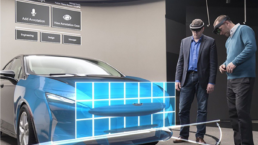
Design and conception
2. Marketing / Communication
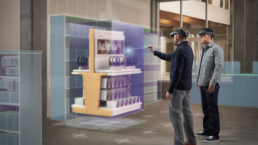
Space Arrangement:we can project oneself into the available empty space and thus make it more attractive.
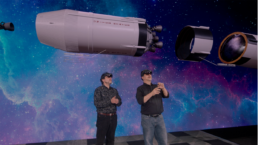
Aerospace: Apollo 11 rocket launch demonstration is an interactive experience that shows how each step of the exploration unfolds.
3. Town planning
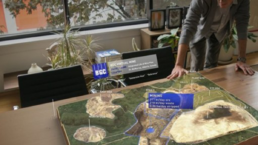
Project of an existing mine: we can visualize the potential of the land, taking into account all its parameters.

Project for the creation of a new railway line: we can follow the different stages of the construction of the project, and measure its integration and its impact on the environment.
4. Defense
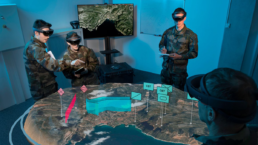
The US army has bought 120.000 Hololens devices to help soldiers in their missions.
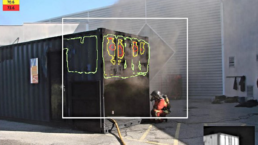
ARR helps firefighters by showing them the hottest areas of the fire and the emergency exits. This would improve a lot the quality of the intervention.
Conclusion
Viewing very complex 3D models with ARR requires a fast internet connexion. This is why the future democratization of 5G shows great promise for ARR. It is therefore expected to be deployed in the years to come.
ARR opens the doors to new uses and services, such as creating a Digital Twin of your smart building, factory or assembly line; pushing the concept of industry 4.0 at its peak!

